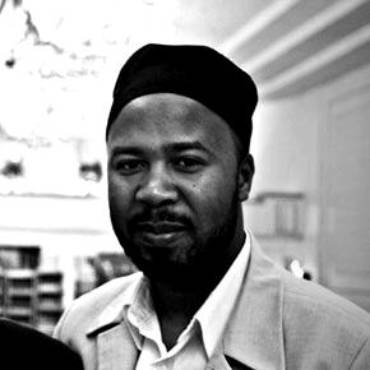
Slavery and Islam: What is Slavery?
Introduction
The Problem of Defining \ˈslā-v(ə-)rē\
How We See Slavery – American Chattel Slavery
The Spectrum of Coerced Labor
Definitions that Never Seem to Work
Slavery in Islam – A Political Question
Conclusion: Focus on the Conditions, not the Word
Notes
[1] The Ottoman tradition of elite slavery may have been inherited from the late Roman and Byzantine Empires, where imperial slaves (often eunuchs) could rise to high positions in the military and the administration; Youval Rotman, Byzantine Slavery and the Mediterranean World, trans. Jane Marie Todd (Cambridge, MA: Harvard University Press, 2009), 104; Cam Grey, “Slavery in the Late Roman World,” in The Cambridge World History of Slavery: Volume I The Ancient Mediterranean World, ed. Keith Bradley and Paul Cartledge (Cambridge: Cambridge University Press, 2011), 499.
[2] Pamela Kyle Crossley, “Slavery in Early Modern China,” in The Cambridge World History of Slavery: Volume 3 AD 1420-1804, ed. David Eltis and Stanley Engerman (Cambridge: Cambridge University Press, 2011), 200.
[3] Christoph K. Neumann, “Whom did Ahmet Cevdet represent?,” in Late Ottoman Society, ed. Elisabeth Özdalga, 117-134. London: Routledge, 2005), 117.
[4] David Brion Davis, Challenging the Boundaries of Slavery (Cambridge, MA: Harvard University Press, 2003), 17-18.
[5] Orlando Patterson, Slavery and Social Death (Cambridge, MA: Harvard University Press, 1982), 22.
[6] Grey, “Slavery in the Late Roman World,” 496; Rotman, Byzantine Slavery, 174-76.
[7] Patterson, Slavery and Social Death, 22.
[8] Crossley, “Slavery in Early Modern China,” 191.
[9] Julia O’Connell Davidson, Modern Slavery: The Margins of Freedom (New York: Palgrave Macmillan, 2015), 162.
[10] Crossley, “Slavery in Early Modern China,” 187.
[11] Vaughan Lowe, International Law: A Very Short Introduction (Oxford: Oxford University Press, 2015), 1.
[12] Here quoting Youval Rotman, Byzantine Slavery, 19.
[13] Rotman, Byzantine Slavery, 17-18.
[14] Rotman, Byzantine Slavery, 97-98.
[15] Joseph C. Miller, The Problem of Slavery as History (New Haven: Yale University Press, 2012), 12.
[16] David Eltis and Stanley Engerman, “Dependence, Servility, and Coerced Labor in Time and Space,” in The Cambridge World History of Slavery Volume 3, 3.
[17] Richard Hellie, “Russian Slavery and Serfdom, 1450-1804,” in The Cambridge World History of Slavery Vol. 3, 276-77.
[18] Cam Grey, “Slavery in the Late Roman World,” 484-6.
[19] Hellie, “Russian Slavery,” 284, 292-93.
[20] Eltis and Engerman, “Dependence, Servility, and Coerced Labor,” 7; Davidson, Modern Slavery, 68. In England this issue was governed by the Statute of Artificers, which the American colonies only adopted in a limited way.
[21] Kerry Ward, “Slavery in Southeast Asia, 1420-1804,” in The Cambridge World History of Slavery Volume 3, 165-66.
[22] Eltis and Engerman, “Dependence, Servility, and Coerced Labor,” 6.
[23] Kenneth Morgan, Slavery and Servitude in Colonial North America (New York: New York University Press, 2000), 8-9, 20; David Galenson, “The Rise and Fall of Indentured Servitude in the Americas: An Economic Analysis,” Journal of Economic History 44, no. 1 (1984): 4.
[24] It was in the Ottoman state’s interest to keep this agricultural system stable; Y. Hakan Erdem, Slavery in the Ottoman Empire and its Demise, 1800-1909 (New York: St. Martin’s Press, 1996), 12-13, 15.
[25] Stanley Engerman, “Slavery at Different Times and Places,” American Historical Review 105, n. 2 (2000): 481
[26] Crossley, “Slavery in Early Modern China,” 189.
[27] Hellie, “Russian Slavery,” 284, 293.
[28] Hellie, “Russian Slavery,” 279-80. The author notes the similarity between this Russian contract and the ancient Persian custom of antichrisis (as named by Greek authors).
[29] Crossley, “Slavery in Early Modern China,” 191.
[30] Ward, “Slavery in Southeast Asia,” 171.
[31] Lawrence M. Friedman, A History of American Law, 2nd ed. (New York: Simon & Schuster, 1985), 225.
[32] W.W. Buckland, The Roman Law of Slavery (New York: AMS, 1969, reprint of 1908 Cambridge U. Press edition), 2-3.
[33] Yan Thomas, “Vitae Necisque Potestas: Le Père, La Cité, La Mort,” Publications de l’École Française de Rome (1984): 499–548.
[34] Buckland, The Roman Law of Slavery, 36-8.
[35] Kenneth Morgan, Slavery and Servitude in Colonial North America, 35, 77; Ira Berlin, Many Thousands Gone: The First Two Centuries of Slavery in North America (Cambridge, MA: Belknap Press, 1998), 116; Paul Finkelman, “Slavery: United States Law,” in Oxford International Encyclopedia of Legal History, 5:258-262; Friedman, A History of American Law, 225-6.
[36] David Brion Davis, Slavery and Human Progress (Oxford: Oxford University Press, 1984), 8.
[37] Ehud Toledano, Slavery and Abolition in the Ottoman Middle East (Seattle: University of Washington Press, 1998), 164-65; Toledano, As if Silent and Absent: Bonds of Enslavement in the Islamic Middle East (New Haven: Yale University Press, 2007), 21.
[38] See also Nur Sobers-Khan, Slaves without Shackles: Forced Labour and Manumission in the Galata Court Registers, 1560-1572 (Berlin: Klaus Schwarz Verlag, 2014).
[39] Martin Klein, “Introduction,” in Breaking the Chains: Slavery, Bondage, and Emancipation in Modern Africa and Asia, ed. Martin Klein (Madison: University of Wisconsin Press, 1993), 4-5.
[40] Rodney Coates, “Slavery” in Blackwell Encyclopedia of Sociology, ed. George Ritzer (Oxford: Blackwell, 2007).
[41] A. Testart, “The Extent and Significance of Debt Slavery,” Revue Française de Sociologie 43 (2002): 176.
[42] Davis, Slavery and Human Progress, 17-19; Brenda Stevenson, What is Slavery? (Malden, MA: Polity, 2015), 8.
[43] Claude Meillassoux, The Anthropology of Slavery (London: Athlone, 1991).
[44] Orlando Patterson, Slavery and Social Death (Cambridge, MA: Harvard University Press, 1982), 7-8, 13.
[45] Nasser Rabbat, “The Changing Concept of the Mamlūk in the Mamluk Sultanate in Egypt and Syria,” in Slave Elites in the Middle East and Africa, ed. Miura Toru and John Edward Philips (London: Kegal Paul, 2000), 89, 97.
[46] Rotman, Byzantine Slavery, 104.
[47] See Ali Yaycıoğlu, “Wealth, Power and Death: Capital Accumulation and Imperial Seizures in the Ottoman Empire (1453-1839)” available at http://www.econ.yale.edu/~egcenter/Yaycioglu%20-%20Wealth%20Death%20and%20Power%20-%20November%202012.pdf.
[48] Leslie Pierce, Morality Tales: Law and Gender in the Ottoman Court of Aintab (Berkeley: University of California Press, 2003), 315; Toledano, As if Silent and Absent, 25; Ebru Boyar and Kate Fleet, A Social History of Ottoman Istanbul (Cambridge: Cambridge University Press, 2010), 147-48.
[49] Dror Ze’evi, “My Slave, My Son, My Lord: Slavery, Family and the State in the Islamic Middle East,” in Slave Elites in the Middle East and Africa, 75. See also Metin Kunt’s short article, “Ethnic-Regional (Cins) Solidarity in the Seventeenth-Century Ottoman Establishment,” International Journal of Middle East Studies 5, no. 3 (1974): 233-39.
[50] Veinstein, G., “Soḳollu Meḥmed Pas̲h̲a”, in: Encyclopaedia of Islam, Second Edition, Edited by: P. Bearman, Th. Bianquis, C.E. Bosworth, E. van Donzel, W.P. Heinrichs. Consulted online on 21 November 2016 <http://dx.doi.org.proxy.library.georgetown.edu/10.1163/1573-3912_islam_SIM_7090> First published online: 2012
[51] Daniel Crecelius and Gotcha Djaparidze, “Relations of the Georgian Mamluks of Egypt with Their Homeland in the Last Decades of the Eighteenth Century,” Journal of the Social and Economic History of the Orient 45, no. 3 (2002): 326.
[52] Christine E. Sears, “‘In Algiers, the City of Bondage’: Urban Slavery in Comparative Context,” in New Directions in Slavery Studies, ed. Jeff Forret and Christine E. Sears (Baton Rouge: Louisiana State University Press, 2015), 203, 207, 211.
[53] Julia O’Connell Davidson, Modern Slavery: The Margins of Freedom (New York: Palgrave Macmillan, 2015), 3, 6, 22-23, 37-39, 69, 169.
[54] Davidson, Modern Slavery, 100
[55] William Clarence-Smith and David Eltis, “White Servitude,” 139, 144.
[56] thestar.co.uk/news/majority-of-rotherham-child-exploitation-suspects-are-white-claims-new-report-1-739263
[57] Davidson, Modern Slavery, 33.
[58] Davidson, Modern Slavery, 32.
[59] Kevin Bales, Understanding Global Slavery (Berkeley: University of California Press, 2005), 52-54.

